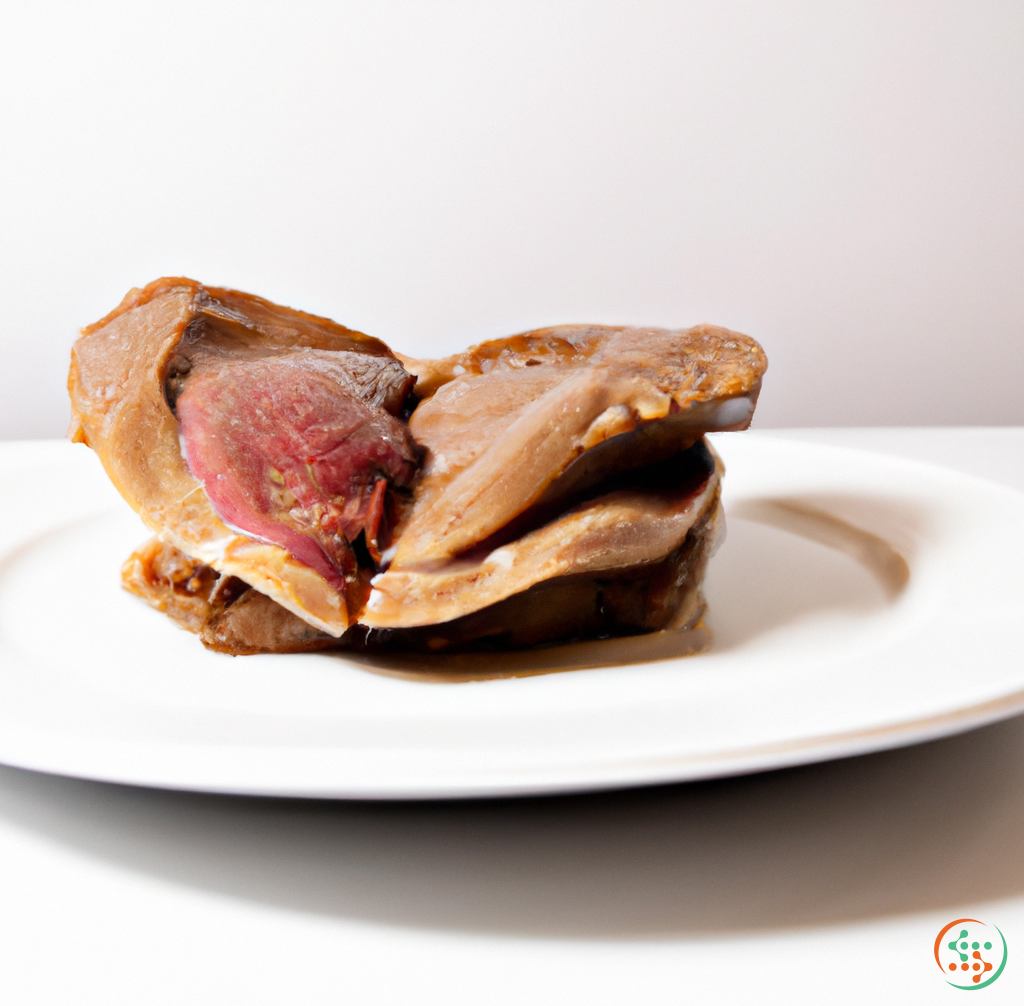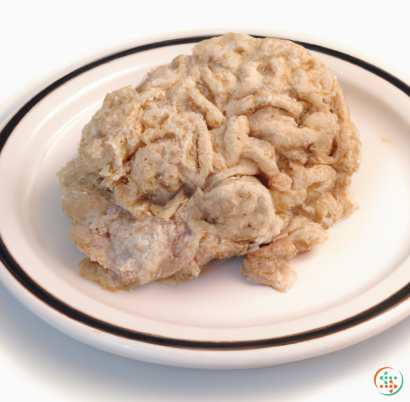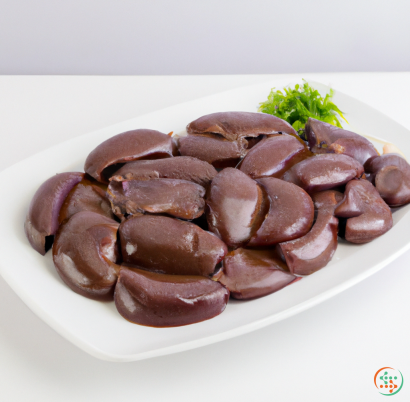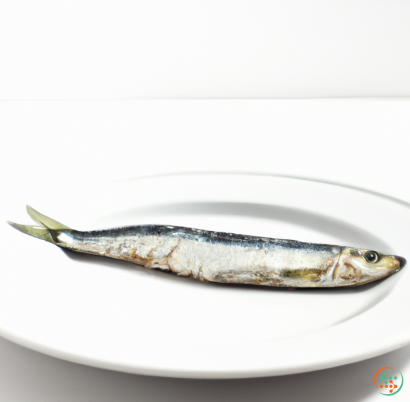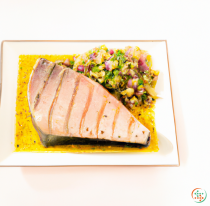Beef Tongue
Beef tongue is an inexpensive yet tasty portion of the cow’s body that is often overlooked by some cultures. It is a great addition to stews and dishes with braised beef or beef stock, providing a hearty and flavourful option for meals. In this article, I will discuss the specific cut of beef tongue, how best to prepare it, and the various health benefits associated with it.
Beef tongue is a cut of meat from the cow’s head. It is usually sold as a single large piece and is usually about five to seven pounds in weight. It is typically very flavorful, having been exposed to a lot of the cow’s fat and connective tissue, giving it a robust and savory flavor.
One of the more common methods of preparing beef tongue is to slow-cook it, either in a stew or braised in a liquid. When cooked, the collagen and connective tissue break down, creating a tender and succulent piece of meat. One of the most popular ways to serve beef tongue is in tacos, wherein it can either be sliced thinly and cooked in a skillet with oil, or slow-cooked, shredded and seasoned with spices.
When preparing beef tongue, it is important to ensure that all bacteria have been killed, as there may be risk of food poisoning if not cooked properly. In order to do this, it should be cooked for two or three hours, or until it reaches an internal temperature of 74°C (165°F).
In addition to its taste, beef tongue also comes with a number of health benefits. It is high in protein and B vitamins, as well as being rich in essential minerals such as zinc, selenium, and iron, making it a great source of minerals for those wanting to improve their overall health. Additionally, because beef tongue is low in fat, it is often seen as a healthy alternative to other cuts of beef.
Another benefit of consuming beef tongue is that it is considered to be an excellent source of collagen. Collagen helps the body build and maintain muscles, bones, and connective tissue, while also helping to keep skin young, hydrated, and healthy. As such, beef tongue is often seen as a beneficial food choice for those looking to build, maintain, and repair muscle, bone, and connective tissue.
In conclusion, beef tongue is an inexpensive yet tasty cut of meat that can be served as part of a variety of recipes. It is often slow-cooked for two or three hours to ensure that all bacteria has been killed and to allow the collagen and connective tissue to break down, creating a tender and succulent piece of meat. It is also a good source of protein, B vitamins, and essential minerals, while being low in fat, making it a healthy alternative to other cuts of beef. Furthermore, because it is a good source of collagen, it is beneficial to consume in order to help the body build and maintain muscles, bones, and connective tissue, thus promoting a healthier lifestyle.
The Journey of the Beef Tongue: From Farm to Dinner Plate
The beef tongue is a cut of beef that is underutilized but tasty and full of rich flavors. Though different cultures around the world have been utilizing this part of the cow for centuries, many are only now beginning to explore the possibilities of this cut of meat. This blog post will explain how a beef tongue is produced, from the farm to the dinner plate.
Start on the Farm
Before a beef tongue can be served on a dinner plate, it has to be raised on the farm. The cow is an incredibly efficient feed converter, meaning that their diet of grains, corn, and other grains can be transformed into edible protein with remarkable accuracy. In order to maximize the amount of edible beef produced by each cow, the animals are fed a high-calorie diet comprising of grain, corn, hay, and other feedstuffs.
The cows are also given regular exercise, which helps keep them healthy and minimize any stress that comes from being cooped up in a small area. This helps ensure that the beef tongue is of good quality and flavor.
The Anatomy of a Cow
Before we can understand how a beef tongue goes from farm to dinner plate, we need to look at the anatomy of a cow. The tongue is located in the head of the cow and is made up of four parts: the mouth, the base, the root, and the tip. The mouth is the largest of the four parts and is where the cow drinks and eats. The base is located at the back of the tongue and is covered in bumps, which help the cow handle its food. The root is located at the base of the tongue and serves as the attachment point to the throat and esophagus. Finally, the tip is the smallest part of the tongue and is used for tasting and handling food. All of the other parts of the tongue are mostly used for grasping and manipulation.
From Farm to Market
Once the beef tongue has been processed on the farm, it is sent to market. It is important to note that all beef is inspected by the USDA prior to being admitted to market. This inspection helps ensure the safety and quality of the beef tongue.
The beef tongue is then cut into various sizes and shapes for easy shipping and transportation to supermarkets and restaurants. The tongue is usually shipped frozen, which helps it stay fresh and flavorful during long trips. However, some stores may choose to sell fresh tongue as part of their meat selection.
Once the beef tongue arrives at the market, it is placed in the meat section and kept fresh with dry ice and refrigerators. This helps ensure that the beef tongue is always at the right temperature when customers purchase it.
From Farm to Dinner Table
Once the beef tongue has been purchased, it is time to prepare it for dinner. To begin, the tongue must be thawed out if it was purchased frozen. This can be done quickly and easily by submerging the beef tongue in cold water or setting it out to thaw at room temperature.
After the beef tongue has thawed, it should be cleaned and trimmed. This is because the tongue may be covered in dirt or other debris from the packaging and shipment. It is also important to trim off any excess fat from the tongue in order to ensure a lean and healthy cut of beef.
Once the beef tongue has been trimmed, it is time to prepare it for cooking. The tongue can be roasted, braised, grilled, or even made into a stew. Each method has its own unique taste and texture, so it is important to experiment and find out what tastes best. For best results, it is important to season the tongue prior to cooking.
Serving the Beef Tongue
Once the beef tongue is cooked, it is time to serve it up to the dinner table. The tongue can be served as the main course or as a side dish. It is important to remember that the tongue is a lean cut of beef, so it should not be overcooked. Overcooking the beef tongue can make it tough and chewy.
Once the tongue is cooked to the desired level of doneness, it is time to plate it up. The tongue can be sliced into medallions or cut into cubes for serving. Additionally, it can be served with a variety of sauces and other accompaniments. To really bring out the flavor, a rich and flavorful gravy such as bordelaise can be served alongside the beef tongue.
Conclusion
The beef tongue is an underutilized but flavorful and nutritious part of the cow. From the farm to the dinner plate, there is a long and nuanced journey that each beef tongue must take. Now that you know how beef tongue is created and travels to the dinner table, you can bring an even greater richness and complexity of flavors to your dinner table.
| Vitamin D | 0.4 ug | |
| Vitamin D3 | 0.4 ug | |
| Vitamin E | 0.3 mg | |
| Vitamin K | 0.0012 mg | |
| Vitamin C | 0.0013 grams | |
| Vitamin B1 | 0.02 mg | |
| Vitamin B2 | 0.29 mg | |
| Vitamin B3 | 0.00349 grams | |
| Vitamin B4 | 0.155 grams | |
| Vitamin B5 | 0.75 mg | |
| Vitamin B6 | 0.16 mg | |
| Vitamin B9 | 0.007 mg | |
| Vitamin B12 | 0.00313 mg |
| Calcium | 0.005 grams |
Daily Value 1.3 g
|
| Iron | 0.00261 grams |
Daily Value 0.018 g
|
| Magnesium | 0.015 grams |
Daily Value 0.4 g
|
| Phosphorus | 0.145 grams |
Daily Value 1.25 g
|
| Potassium | 0.184 grams |
Daily Value 4.7 g
|
| Sodium | 0.065 grams |
Daily Value 2.3 g
|
| Zinc | 0.00409 grams |
Daily Value 0.011 g
|
| Copper | 0.15 mg |
Daily Value 0.9 mg
|
| Manganese | 0.02 mg |
Daily Value 0.0023 g
|
| Selenium | 0.0132 mg |
Daily Value 0.055 mg
|
| Total Sugars | 0 ug |
per 100g
|
| Lauric acid (12:0) | 0.02 grams |
|
| Myristic acid (14:0) | 0.73 grams |
|
| Palmitic acid (16:0) | 4.64 grams |
|
| Stearic acid (18:0) | 2.35 grams |
|
| Total Saturated fatty acids: | 7.74 g | |
| Oleic acid (18:1) | 8.91 grams |
|
| Palmitoleic acid (16:1) | 0.93 grams |
|
| Gadoleic acid (20:1) | 0.08 grams |
|
| Total Monounsaturated fatty acids: | 9.92 g | |
| Omega-3 Alpha-linolenic acid (18:3) | 0.07 grams |
|
| Linolenic acid (18:3) | 0.09 grams |
|
| Linoleic acid (18:2) | 0.53 grams |
|
| Total Polyunsaturated fatty acids: | 0.69 g | |
| Cholesterol | 0.13 grams |
|
| Total Sterols: | 0.13 g | |
